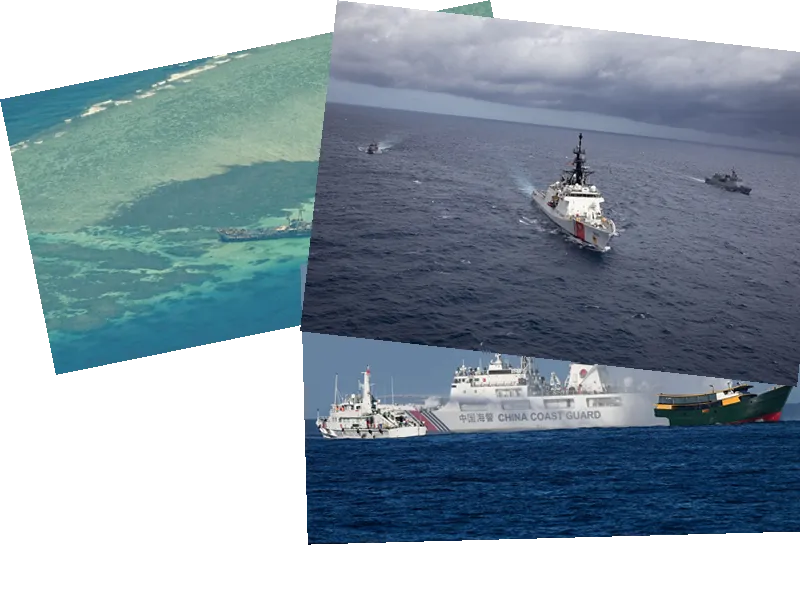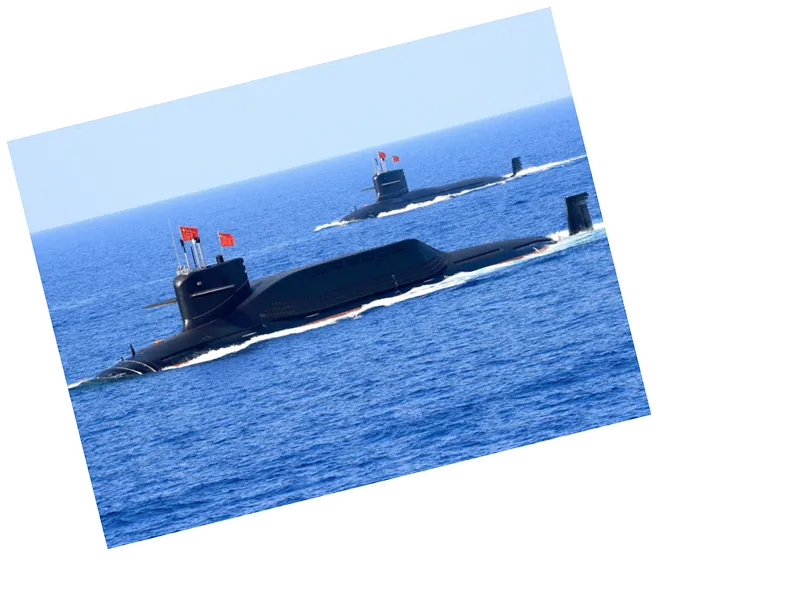Tensions Escalate in South China Sea with Latest Collision
The South China Sea has once again become a focal point of international tension following a collision between a Chinese ship and a Philippine supply vessel near the Second Thomas Shoal. The incident, which occurred on Monday, has led to a series of accusations and counter-accusations between the two nations, further complicating the already fraught situation in the disputed waters.
The United States has condemned China's actions, with US State Department spokesman Matthew Miller stating that the US stands with its ally, the Philippines, and denounces China's irresponsible behavior. This collision is the latest in a string of confrontations in the South China Sea, a region rich in resources and of significant strategic importance.
Historical Context and Recent Developments
The Second Thomas Shoal, known as Ayungin Shoal in the Philippines and Ren'ai Jiao in China, is a teardrop-shaped reef located about 200 kilometers from the Philippine island of Palawan. It is part of the Spratly Islands, an archipelago claimed by multiple countries, including China, the Philippines, Vietnam, Malaysia, Brunei, and Taiwan.
In 2016, an international tribunal in The Hague ruled in favor of the Philippines, stating that China had no legal basis to claim historic rights over most of the South China Sea. However, Beijing has ignored this ruling and continues to assert its claims over the region. Over the past year, Chinese Coast Guard ships, supported by maritime militia vessels, have been involved in several incidents that have damaged Philippine ships and injured Filipino sailors.
The latest collision occurred as a Philippine supply ship was on a mission to deliver supplies to soldiers stationed on the BRP Sierra Madre, a vessel deliberately run aground in 1999 to assert the Philippines' territorial claims. China has accused the Philippine ship of illegally entering its waters and causing the collision through dangerous maneuvers. The Philippine military has rejected these claims, accusing China of dangerous and reckless behavior.
The situation is further complicated by a new Chinese law that came into effect recently, authorizing its coast guard to seize foreign ships and detain their crews for up to 60 days without trial if they are suspected of trespassing. This has heightened tensions and raised concerns about potential escalations in the region.
The United States has reiterated its commitment to the Philippines under a mutual defense treaty, with President Joe Biden stating that any attack on Philippine aircraft, ships, or armed forces in the South China Sea would trigger a response. The international community remains watchful as the situation unfolds, with many fearing that the South China Sea could become a flashpoint for broader conflict.
- The collision between the Chinese and Philippine ships is not an isolated incident but part of a broader pattern of confrontations in the South China Sea. The region is a critical maritime route with trade worth over $3 trillion passing through annually.
- China's aggressive stance in the South China Sea is seen as part of its broader strategy to assert dominance in the Indo-Pacific region. The recent law empowering the Chinese Coast Guard to use lethal force against foreign ships and detain their crews has added to the volatility.
- The Philippines, supported by the United States, continues to resist China's claims, citing the 2016 Hague ruling. However, the lack of enforcement mechanisms for this ruling has emboldened China to continue its activities in the disputed waters.
- The international community is concerned that the ongoing tensions could lead to a larger conflict. Diplomatic efforts are ongoing, but the situation remains precarious, with both sides showing no signs of backing down.






